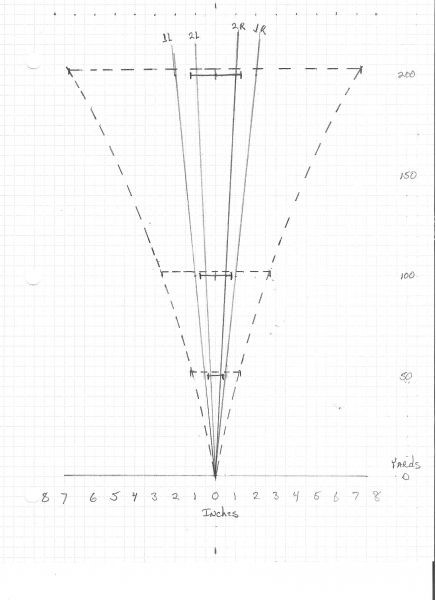My dear lmg,
I wasn't aware that I was under your authority and here to do your bidding. I'm sorry that I stepped outside my bounds :(
But, as always, it's you that that brought this subject to this forum, the title of which is “The RPM Threshold” and is incumbent upon you to prove.
You offer no scientific proof but, ask us to blindly follow you, in your believe that Your threory is real. The thread title isn't even HV cast bullets, again, it's the rpm threshold, everybody else was able to read that.
I've ask you for many years to please do a scientific, blind test, using one rifle and 3 or more idenitical (other that twist) barrels and since we now, can now order people around, I also am saying that it has to be a BLIND test and that you may not do the shooting but, you MAY to the loading of the unmarked, bulk ammo. Oh yea, no sighter shots in the testing results, please :)
I could go on for many more paragraphs but, I'll conclude with this:
Please tell us how these CBA shooters can shoot at 160,000 - 189,000 rpm, with match accuracy and not hunting accuracy as your results have been.
CBA match at Tamaqua, PA
Bottiger, Jerry, Cartidge, 7mm BR - Barrel, Shilen 23” lg, 9 twist - Weight, 12.62 lb - Scope, Weaver 36x
Bullet, NEI 170, Nose .276, Band .285 - Alloy, Lino - Primer, Rem 7 1/2 - Load, Varget 27 gr - Vel, 2000 fps
100 yd, May 2014, ave. of four, five shot groups, 1.395 - June 2014, 100 yd ave. of four, five shot groups 0.774
May, 2014 Charlotte, NC
Galindo, Adolph, Class, UnP - Cartridge 30BR - Barrel, Lilja 22” lg, 8 twist
Scope, Leupold 40x - Weight, 22Lb. - Bullet, LBT 180 sp - Alloy, Lino - Nose .304, Base .310
Primer, Fed 205m - Powder Chg, 28.5, Varget - Vel 2100 (189,000 RPM)
Galindo, Adolph UnP 197 8x 100 yd, 193 2x 200 yd, 100/200 Agg 390 10x
Galindo, AdolphUnP 5 shot group, 0.469 100 yd, 200 yd,1.807 100/200 MOA 0.686
Galindo, AdolphUnP 10 shot group, 0.951 100 yd, 3.232 200 yd, 100/200 MOA 1.283
Are these guys, mistaken about what they are shooting or providing untruthful info about their equipment?
Their results where shot at a CBA match and as a CBA member, you may also shoot at a match and have your results recorded. Their groups even had a moving backer for the groups although, I won't insist on that for you.
You see, LMG, that I have a cadre of CBA shooters to do my testing for me. I don't have to fire a shot, nor spend my money on lead, powder and primers to obtain inferiour accuracy.
The rules are simple for this type of presentation, do a scientific, blind test and there will be no doubt. Along with that, you can also bring your equipment to CBA matches and compare it to CBA match results. In that case, other shooters may want to give it a try and further your testing and it's results.
Now my last thought about this is:
You have always called this a “threshold", why is that? A threshold is something that when crossed is different on one side than the other.
Definition:
The magnitude or intensity that must be exceeded for a certain reaction, phenomenon, result, or condition to occur or be manifested.
You seem to use it more like a hallway, since it can be “pushed up” (Lengthen) to what ever you want it to be and still not exceeded. My take on it is that if a threshold is crossed, it's different on the other side and you indicate the difference will be less accuracy, not the same and not better as the above info would indicate.
Frank



























.jpg?width=50&crop=0,0,50,50)























 The next 2 screenshots are the actual groups printed out by the Meyton system and they show the extremes for the calculated ratios. Landy Max & Min non-linear group growth. 3.62:
The next 2 screenshots are the actual groups printed out by the Meyton system and they show the extremes for the calculated ratios. Landy Max & Min non-linear group growth. 3.62:  1.99:
1.99: 

 Started off with a cold clean bore at 100 yards. There's 12 shots there. The 1st fouling shot went high as usual (the target is slightly kitty wampus to the left) and the second fouler is in the group. I then shot 10 shots for the group. As we see the group measures right at 1.1". It is my understanding that sighters are allowed in CBA competitions, right? If so then is it wrong to use them here in a simple test? Anyways, here is the 100 yard 10 shot group (actually 11 shots in that group).
Started off with a cold clean bore at 100 yards. There's 12 shots there. The 1st fouling shot went high as usual (the target is slightly kitty wampus to the left) and the second fouler is in the group. I then shot 10 shots for the group. As we see the group measures right at 1.1". It is my understanding that sighters are allowed in CBA competitions, right? If so then is it wrong to use them here in a simple test? Anyways, here is the 100 yard 10 shot group (actually 11 shots in that group).




